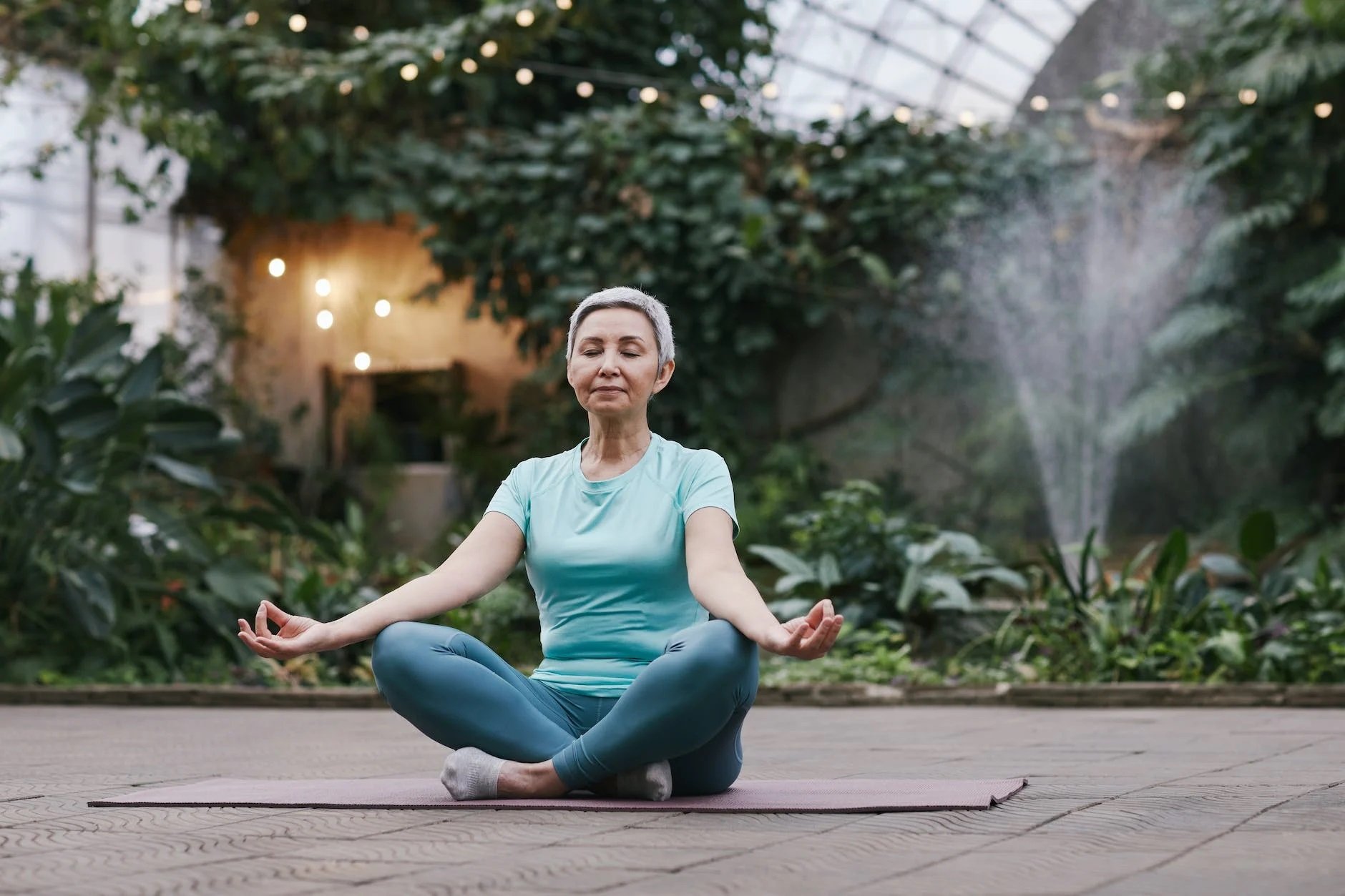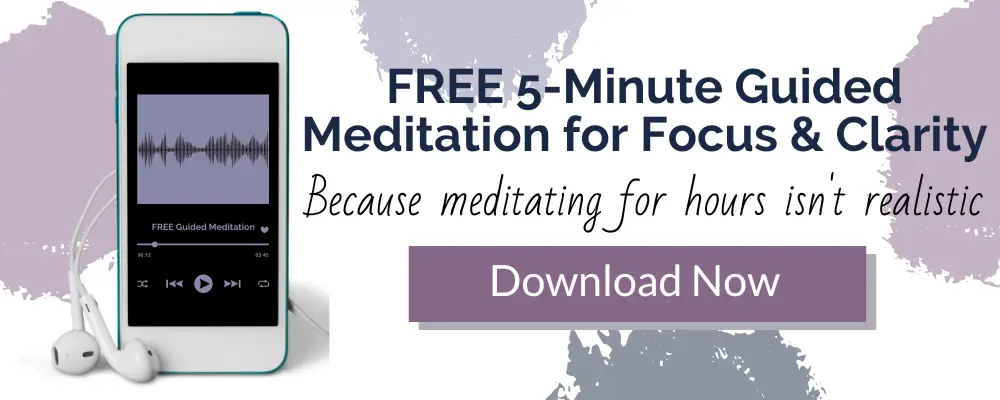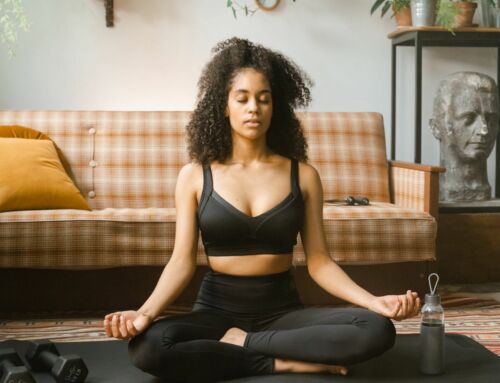Unlock Calm With 10 Mindfulness Meditation Exercises

Mindfulness meditation is all about learning to observe your immediate surroundings without passing judgment. You don’t have to force yourself to concentrate, or try to clear your thoughts, just observe. This is a key takeaway from all mindfulness meditation exercises.
The method lets you focus your awareness on one single thing, be it an internal vision, an external sound, or your immediate physical surroundings. Reducing anxiety, lowering your stress levels, and boosting your health are all benefits of practicing mindfulness meditation.
How is mindfulness meditation different from other types of meditation?
Because meditation has been practiced for millennia, a wide variety of approaches have developed throughout the years. Mindfulness meditation manages to stand out since it revolves around being present and aware of what’s going on right now. Mindfulness meditation is considered to be an easier form of meditation in contrast to other forms of meditation that require intense focus. It’s designed to raise awareness of the here and now without attaching any value judgments to that awareness.
How do I start practicing mindfulness meditation?
Mindfulness meditation can be done anywhere and at any time. Some people like to close their eyes, while others like to keep them open. You can meditate at work, school, or a time you set aside just for that. You might find it helpful to practice somewhere quiet where no one will bother you. But there isn’t a correct or incorrect approach to practice mindfulness meditation. Do what works for you.
Focus on Breathing
One of the best ways to start your mindfulness exercise practice is to just start focusing on the act of breathing. Choose a relaxing position for yourself (laying down or sitting) and concentrate on the sensation of air entering and leaving your body with each breath. Whenever your thoughts wander, gently bring them back to your breathing.
When Your Mind Wanders
It’s very normal for your thoughts to wander while you’re trying to meditate. When this happens, just notice the thought or feeling and then bring your attention back to your breath or something else. Over time, it will get easier and easier for you to stay focused and in the moment when you sit down to meditate.
What are some mindfulness meditation exercises?
Below are 10 different mindfulness exercises that may assist you in being more self-aware and mindful. Although it seems like there are about a million different techniques for meditation, keep in mind that some practices may be more suited to your own needs than others. Experiment with all of them to determine which one better suits your needs.

Body Scan Meditation
You pay attention to every part of your body during body scan meditation, from your toes to your head. It can help you in releasing tension and reduce stress and becoming more aware of how your entire body feels.
Begin by lying on your back with your arms at your sides. Take a few deep breaths and then consider where your feet are. Slowly shift your attention from your feet to your legs, then to your torso, arms, and head. Pay attention to any sensations you feel in each area.
Make sure to give each part of your body a few seconds of your attention prior to moving on to the next. If your mind starts to wander, gently bring it back to what you are feeling in this part of your body.
Progressive Muscle Relaxation Exercises
Progressive muscle relaxation is a method in which you tense and relax each group of muscles in your body one at a time. It can help relieve stress and tension and make you feel more relaxed.
Start by finding a quiet place to sit or lie down. Take some deep breaths, and then pay attention to your toes. Hold your toe muscles tight for a few seconds, and then let them go. Move on to your feet, legs, torso, arms, and head, tensing and relaxing each muscle group in turn.
As you move through the sequence, pay attention to how each muscle group feels when it is tight and when it is relaxed. If your mind starts to wander, gently bring it back to what you’re feeling in the muscle group you’re working on.

Walking Meditation
Walking and moving meditations are great ways to learn to be more mindful while also getting some exercise. It can help you feel less stressed, concentrate better, and feel better all around. This is the perfect way to meditate if you have trouble staying still when you try to meditating sitting or lying down.
Find a quiet place inside or outside to walk. Stand still and pay attention to your breath to start. Then, start to walk slowly and with awareness, paying close attention to how your feet feel on the ground and how your body moves.
Instead of getting lost in your thoughts, try to pay attention to how walking feels. If your thoughts start to wander, gently bring your attention back to how your feet feel on the ground.
Mindful Breathing Meditation
Mindful breathing meditations are just a simple breathing exercise that the feeling of your breath going in and out of your body to keep your mind from wandering. It can support reduced stress and anxiety, support you becoming more focused and able to concentrate, and let you unwind and relax.
Find a place to sit down where it’s quiet. Pay attention to how your breath feels as it goes in and out of your lungs like waves on a beach.
Pay attention to how your breath feels, like how the air moves through your nose and how your belly rises and falls as you breathe. If your mind starts to wander, don’t worry. Just bring it back to your breath in a gentle way.

Loving Kindness Meditation
In loving-kindness meditation, you work on feeling love and compassion for yourself and for other people. It can help improve your mood, make you more compassionate and empathetic, and allow you to feel more connected with other people.
Start by finding a quiet place to sit down. After a few minutes of focusing on your breath, start to think about someone you love. Say the words “may you be happy, may you be healthy, may you be safe, may you live with ease” silently to yourself and think of the person. Do the exact same thing for yourself, someone you feel neutral about, and someone you have trouble getting along with.
Instead of just repeating the words, try to focus on the feelings of love and kindness as you say them. If your mind starts to wander, bring it back to the phrases in a gentle way.
Guided Imagery / Visualization Meditation
When you do guided imagery or visualization meditation, you think about a peaceful scene or situation. These meditations can help reduce anxiety and stress, improve your mood overall, and make you feel happier.
Find a quiet place where no one will bother you. Close your eyes and think of a quiet place, like a beach or a forest. Imagine the scene with as many details as you can, including what you can see, hear, and smell.
Try to be fully present in the scene you’re imagining. Immerse yourself into your mental image it as much as you can. If your mind starts to wander, bring it back to the visualization in a gentle way.

Candle Gazing Meditation
Candle gazing meditation, also called trataka, is when you look at the flame of a lit candle to help calm your mind and improve your ability to concentrate. It can help you feel less stressed, concentrate better, and feel more calm and relaxed.
Find a quiet place to sit down in front of a candle that is at eye level. Try to keep your eyes from blinking for as long as you can while looking at the flame. When your eyes start to water, close them and see the afterimage of the flame in your mind’s eye. Keep doing this for a few minutes, slowly increasing how long you can look at the flame without blinking.
To keep your attention on the flame, try to loosen up your body and take deep breaths. Pay attention to the flame and try to block out any other thoughts or things that come to mind. If you start to think about something else, gently bring your attention back to the flame. Candle-gazing meditation can also be helpful if done in a dark room with few distractions.
Mantra Meditation
In mantra meditation, you repeat a word or phrase to help clear your mind and feel at peace with yourself. It can help you feel less stressed, concentrate better, and feel happier and healthier.
When selecting a mantra choose a phrase or word that means something to you personally, like “peace” or “love.” Find a quiet place to sit and say the word or phrase to yourself over and over again. When your mind starts to wander, bring it back to the mantra in a gentle way.
Try not to think about what the word or phrase means as you repeat it. Instead, pay close attention to the way it sounds as well as how it makes you feel. If your mind starts to wander, bring it back to the mantra in a gentle way. A mala or set of beads can also help you keep track of how many times you repeat the mantra.

Raisin Meditation
Raisin meditation is a unique form of mindfulness meditation in which you focus on a single raisin with all of your senses. By focusing on the raisin and being fully present with it, you can improve your ability to be mindful and in the moment in your daily life. It can help you focus better, feel less stressed and anxious, and feel more grateful and appreciative.
To start raisin meditation, choose a single raisin and hold it in your hand. Fully engage with the raisin, try to give it all of your attention and not think about anything else. Use all of your senses to get the most out of the raisin and be fully present in the moment. If your mind starts to wander, bring it back to the raisin and the feelings it is giving you.
It can also help to do raisin meditation in a quiet, calm place so that you don’t get too distracted.
Vipassana Meditation
Vipassana meditation, also called “insight meditation,” is a way to learn more about yourself by focusing on your thoughts. It can help you learn to control your feelings better, feel less stress and worry, and feel more peace and happiness. For the full experience vipassana meditation is often taught in a 10 day retreat format.
Find a comfortable place to sit and focus on your breath to start practicing vipassana meditation. As you breathe, try to notice how your body feels without judging it. Take note of how your chest moves up and down, how air goes in and out of your nose. Expand your awareness to include all experiences in the present moment, such as thoughts, feelings, and outside stimuli.
During vipassana meditation don’t judge your thoughts and feelings. Just watch them as they are, without getting attached or pushing them away. When your mind starts to wander, gently bring it back to your breath and the way your body feels. This practice can help you become more self-aware and understand your thoughts and feelings better over time.
Try It For Yourself
This post only touches on a few of the many different ways to practice mindfulness meditation. Everybody is different, so it’s essential that you choose the exercise that fits best for you. Take a little time to try out the different techniques and start figuring out which one you like best.
If you’re looking for simple mindfulness exercises or mindfulness activities you can sprinkle throughout your day like mindful eating or mindful listening I have a post that details mindfulness exercises you can do without meditation.













